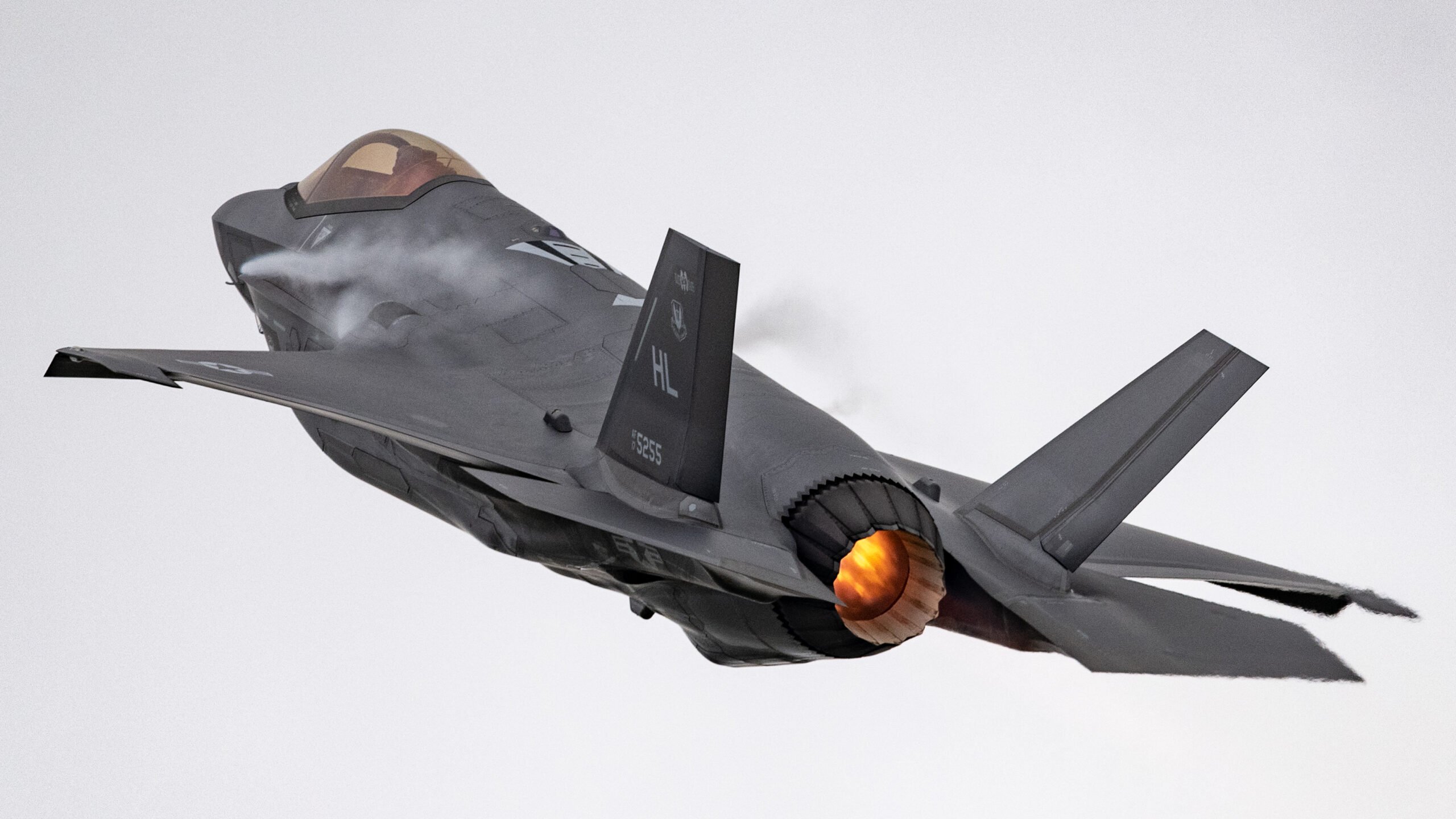
U.S. Air Force Maj. Kristin “BEO” Wolfe, F-35A Lightning II Demonstration Team pilot and commander, performs for F-135 engine maintainers assigned to the Oklahoma City Air Logistics Complex, at Tinker Air Force Base, Okla., May 25, 2021. (U.S. Air Force photo by Staff Sergeant Thomas Barley)
WASHINGTON — With a draft of the House Armed Services Committee’s fiscal 2024 defense policy bill showing that House authorizers want to revive the Air Force’s Adaptive Engine Transition Program, the question of whether the next-gen powerplant could make its way into the F-35 Joint Strike Fighter seems once again in play.
For Rep. Rob Wittman, a Virginia Republican who chairs the House Armed Services Tactical Air and Land Forces subcommittee, it’s too soon to say what the fate of an adaptive engine for the F-35 might be as Congress weighs its merits against that of the Pentagon’s preferred Engine Core Upgrade (ECU).
“I think that we need to let the engineering and the physics of the engine and the engine capability as the design goes [forward] to determine that,” Wittman said in an interview with Breaking Defense on Thursday.
But, Wittman emphasized, it’s critical to keep AETP going whether it ends up on the F-35 or not, in order to support the Air Force’s Next Generation Air Dominance (NGAD) fighter, which will be powered by an adaptive engine. “That’s the same sort of technology that could be applied in NGAP,” he observed, referring to the Air Force’s Next Generation Adaptive Propulsion program.
AETP is an engine R&D effort that GE Aersospace had hoped would lead to the rights to put an alternative engine to the Pratt-made F135 on the F-35 fighter. However, earlier this year the Air Force announced it was ending the AETP program, concluding that its prohibitive cost and lack of commonality for all three variants of the fighter would not be a good solution for the F-35. GE has been lobbying to keep the program going in the immediate term as an R&D effort, but is also still pushing for an adaptive engine solution for the Joint Strike Fighter.
As part of the markup process for the FY24 policy bill, House authorizers would mandate the military services to set modernization requirements for the full lifecycle of the F-35, with a key focus on power and thermal management. Doing so will enable officials to fully learn “where is the cap on power and cooling for ECU,” which would apply to AETP as well, according to Wittman.
Those measures “will inform the next steps for the engine versions in all three aircraft,” he said, emphasizing that the AETP engine is not compatible with the vertical takeoff and landing F-35B variant. Still, Wittman said, “then the question becomes, Okay, what about the [F-35A] and the [F-35C]?
I don’t know where we’re going to end up. I want the facts and the engineering and design to fully inform the decision. That’s what we try to do this year,” he added.
RELATED: Rep. Wittman on F-35 engine upgrade, KC-46 concerns and which USAF plane’s ‘time is done’
Though both Pratt and GE have been participating in the AETP program, Wittman pointed out that Pratt has had to divide its efforts between AETP and its ECU offering.
“GE is not doing ECU. So Pratt’s obviously spending time and resources on ECU as well as AETP,” he said.
“Our F135 engine has overperformed on the F-35 since the program’s start, and we’re happy the DoD and services are committed to upgrading the engine to ensure the F-35 has full Block 4 capabilities starting in 2028,” Jill Albertelli, president of Pratt & Whitney military engines, said in a statement to Breaking Defense. “We’re focused on rolling all of our AETP learnings into the next-generation adaptive propulsion program, which is where the focus and funding should be,” she added.
Provisions for AETP could still change as the full House Armed Services Committee debates the legislation, which must be negotiated between the Senate and approved by both chambers of Congress. Authorizers also do not control the budget process, meaning that funding for AETP is uncertain until appropriators in the House and Senate back the program with the requisite funding for it to continue.
Asked whether he was concerned appropriators might not provide funding for AETP, Wittman replied “I think in our conversations with appropriators … they understand the importance of AETP for a variety of reasons, not only for continuing to develop that technology, but also where that’s gonna go with NGAP.”
Looking forward to NGAD, he stressed it’s important for development of the fighter’s engine and airframe to be in sync, otherwise the program risks “end[ing] up with a lot of wasted resources” to close any gaps between the two.
A similar line of reasoning applied to the committee’s decision to cut nearly $551 million from the Air Force’s NGAD budget. Citing the program’s highly classified nature, Wittman declined to offer the full reasons for the decrease, though he explained that the decision stems from ensuring that development of all next-gen assets that will pave the way to new warfighting techniques — such as the Next Generation Air Refueling System, E-7A and Collaborative Combat Aircraft — are properly aligned.
“All those things have to happen,” the congressman said. “What we don’t want to happen is to say, Okay, we’re spending really hard on NGAD. But then we’re gonna stop and wait for other stuff to be able to catch up.
“So what we’re saying is, let’s take a breath, let’s get everything right,” he added. If those programs are not all on track together, “then the likelihood is best case scenario is on time,” but “the reality is probably more further to the right.”












